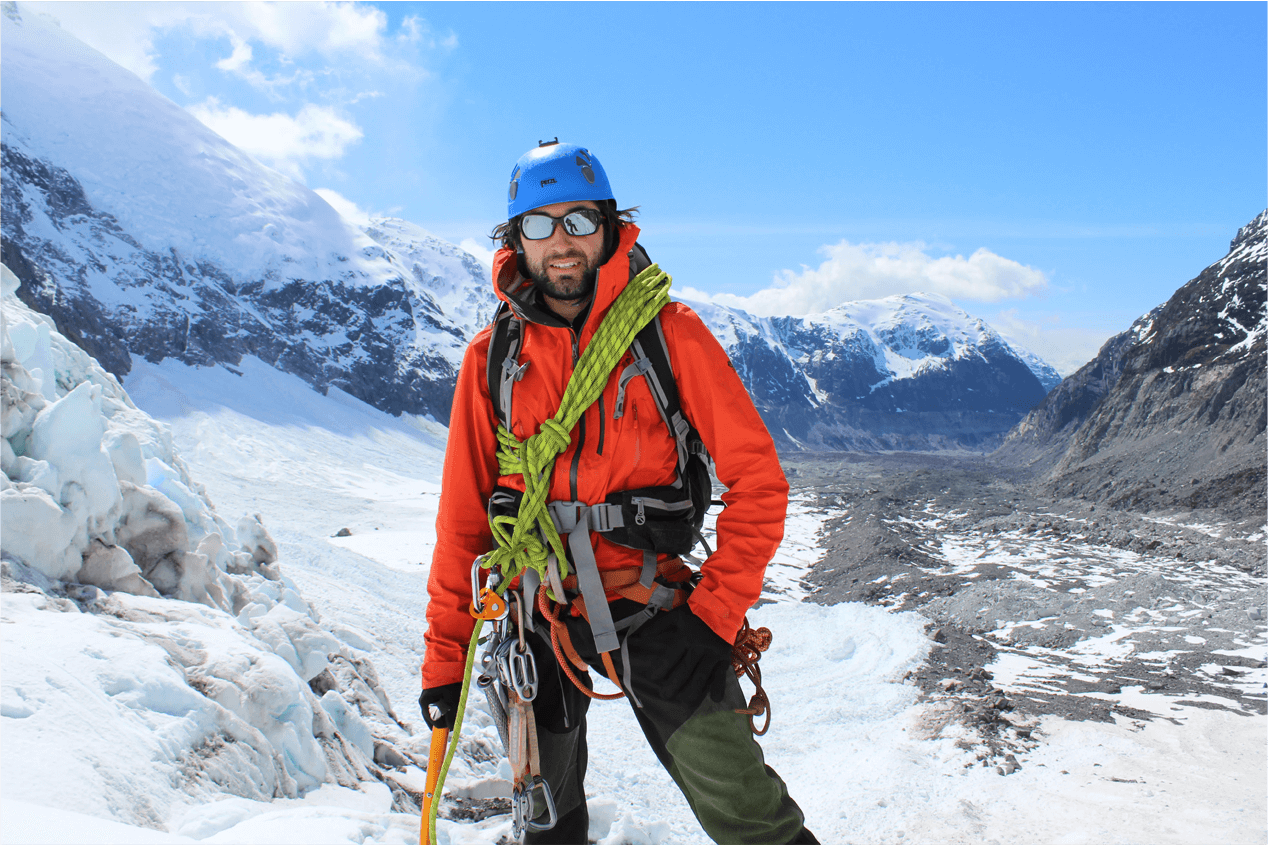Mountaineering is an activity that must be practiced accounting with some recommendations. Indeed, in addition to being a unique experience to live the adventure and the passion of a new experience, it is also a sporting discipline that must be treated with commitment.
At Tolhuin Expeditions, we want all of your experiences with us to be enjoyable and a personal triumph. For this reason, today we want to share with you some recommendations, which you should take into account when going mountaineering.
How can altitude affect you?
The air in the atmosphere is made up of 20.9% oxygen. This percentage is kept constant and only changes when it leaves the troposphere (the layer that covers the Earth’s atmosphere). However, when a person is climbing, as the altitude increases, the atmospheric pressure decreases. Due to this phenomenon, the human body experiences a decrease in the partial pressure of oxygen in the inspired air and can suffer from acute mountain sickness, better known as altitude sickness.
In a nutshell, this phenomenon is understood as the physical discomfort experienced when a person has difficulty adapting to low oxygen pressure due to high altitude.
Although everyone may have different reactions, the most common symptoms of altitude sickness are:
- Headaches: this is the most frequent symptom of acute mountain sickness. It is usually felt in different areas of the head and can become more acute depending on atmospheric conditions.
- Drowsiness and periods of apnea: it is common for people to suffer from sleep disturbances, due to the hyperventilation generated in response to altitude sickness.
- Nausea and vomiting.
- Excessive exhaustion.
Although most of the time the symptoms are mild, they can also cause discomfort, interfere with activity due to discomfort, or be disabling. Likewise, they are generally progressive, appear between 2 and 12 hours after arrival at a new altitude and may increase after the first.
What can be done to prevent altitude sickness?
As a first step, it is recommended that there is a good preparation before shipping. Good physical condition, health care and acclimatization are essential aspects to prevent this condition. It is also recommended to maintain a varied and balanced diet, to follow the recommendations for adequate hydration, to avoid the consumption of alcoholic or psychoactive substances and at least 8 hours of sleep the day before the planned activity.
On the other hand, it is recommended that in case of health problem, the mountaineer goes to a professional and advises his guides, companions or group on his conditions, his background, the medications he takes and be very careful. by following the instructions. which will allow a successful ascent.
Read also: List of equipment you need for our <<Unlimited Expeditions & Summit>>
How to prepare for hiking at altitude?
The highest mountain in Chilean Patagonia, Mount San Valentín or San Clemente is the highest peak of the Northern Ice Field in Laguna San Rafael National Park and Biosphere Reserve.
The so-called White Roof of Patagonia was discovered only in 1920 from the top the view shows unforgettable landscapes of the lagoon and the San Rafael glacier with its 4,058 meters above sea level. The first ascent happened in 1952. From the summit there is an impressive view of the surrounding mountains that reaches up to General Carrera Lake and the San Lorenzo hill.
Including the binational border at the east and to the west the Patagonian channels and archipelagos. The San Valentine thus rewards those who dare.
Considering all the above, people who want to embark on the adventure should keep in mind that it is an activity that requires a lot of effort. Therefore, it is important that a series of tools and recommendations accompany you during your preparation.
1. Decide where you want to go: It is important to confidently decide where you are going to do the activity and to be interested in what it offers in terms of adventure. For this reason, it is essential to ask questions such as: Which part of the world interests me the most? Why am I interested in high altitudes? Do I want to live an experience in a desert or in the mountain’s environment?
With the help of these questions, making a good decision and enjoying even the most difficult moments of ascension can be a much easier task.
2. Distance: when the destination is already clear, the climber must measure the distance he wants to go and investigate the terrain, the climbing conditions, among others. This is very effective when it comes to properly calculating walking time and setting goals and targets
3. Time: For hiking, climbing or trekking, there are estimated travel times; For example, a hike can last around 1 to 6 days. Because it all depends on where you are going, the decision involves all possible variables being taken into account and the most favorable conditions being chosen.
4. Do not confuse the terms: many do not know the difference between trekking, hiking or expedition. The truth is that although they have aspects in common, they are not the same activities. Trekking refers to a walk true an Azimuthal route that covers a territory at medium or high altitude, expedition is the ascent of a mountain regardless of its difficulty is carried out on paths, tracks and fixed routes.
5. Heavy or light travel?: depending on the weather, the tastes and the type of traveler, it is an essential aspect, since the type of physical and mental preparation to be carried out before the trip depends on it.
6. What food to take?: This is one of the most important factors, as food on this type of trip is essential to maintain high levels of energy and oxygenation. Recommended foods to bring include:
- Canned vegetables
- Dried fruits
- Dehydrated fruits
- Cereals
- Energy bars
- Juice
- Rice
- Bread
- The water
7. What should you pack in your travel backpack?: As already mentioned, water is the first element that every adventurer must have, however, there are other things that cannot be neglected and must be included in the travel backpack, they are:
- A fairly large camping tent.
- Very light sleeping bag, but warm in the event of an excursion.
- An inflatable mattress.
- An electric cooker for cooking food, fully charged.
- Shoes comfortable enough for walking.
- Toolbox.
- Rope.
- Protective helmet and expedition cap.
- Change of clothes.
- Jacket.
- Food in good proportions.
- Undoubtedly the mobile phone and its charger.
- A compass.
- A map of the area.
- First aid kit.
- Practical items such as a knife, sheets and sunglasses, all that is deemed necessary to have the best trip in high altitudes.
What are the side effects of altitude?
If the right precautions are not taken, some climbers may experience symptoms after climbing volcanoes or mountains. In some cases, after doing an altitude expedition, lung problems, insomnia, headaches, asthma problems, hypertension and even chronic mountain sickness can be developed.
Although these are ailments that can be treated clinically, mountaineers are strongly advised to follow all recommendations and instructions given by specialists (doctors and trained mountaineers). Considering what we have shared so far, you already know what you need to do when you decide to start your big adventure. Just follow these tips to be fully prepared and have the support you need.
Now, you should know that there are different activities, such as hiking in the Alps, that you can practice without exposing yourself. Here you will find mountaineering enthusiasts, you will enjoy magnificent landscapes and you will be able to meet other beginner adventurers.
At Tolhuin Expeditions we want you to be part of our adventurous world, connecting to yourself and with the environment have to offer. Go ahead and enjoy adventure tourism in Chile!
You may be interested: Unmissable trekking destinations in Patagonia












